I’ve written about a number of British Military chronographs already on the blog, but this one is something of a rarity, a two pusher chronograph from Lemania.
(Click pictures to enlarge)
Lemania produced chronographs for the British Military from the 1940’s onwards, the majority of them having just a single pusher; subsequent presses of the pusher start, stop and reset the chronograph and there is no way to restart the timer without resetting. The earliest watches were built around the Lemania cal. 15CHT and later models, introduced in the 1960’s, were powered by Lemania’s excellent cal. 2220. I’ve written about both models in the past, see the 15CHT here, and the 2220 here.
In the early 1970’s the Ministry of Defence made a significant change to the defence standardisation document relating to wrist chronographs (DEF STAN 66-4), subsequently allowing a chronograph to have either ‘one or two pushpieces’.
This opened the door for the use of more commercially viable (read: cheaper) movements, namely the Valjoux cal. 7733. For the next decade the majority of mechanical chronographs were supplied by four companies; Hamilton, Precista, Newmark and CWC (see an example here), until the introduction of the quartz chronograph rendered them obsolete.
Lemania weren’t completely sidelined during this period as they also produced a limited number of two pusher chronographs. However, the watches were only issued in 1975 and 1976, making them one of the rarer military watches.
Looking at the caseback, you can see the military markings; the ‘0552’ denotes that the watch was issued to a member of the Royal Navy, and the year of issue as you can see is 1975.
Inside the watch is a Lemania cal. 1872, a calibre that will be recognised by many vintage chronograph enthusiasts as it was used in many good quality civilian chronographs.
As well as being issued to British Military personnel, a small number of 1872 powered watches were also produced by Lemania for the Swedish and South African Air Forces. Although the movements may have been the same, the cases, dials and hands were different and as these watches were produced in low volumes, they are now very collectable.
The watch in this post arrived in running order and the movement was in very good condition, thanks in part to an inner dust cover which in addition to a regular caseback gasket, further protects the movement from the elements.
Though the movement needed no more than a routine service to bring it back to its best, the watch did have a few cosmetic issues. The lume in the hands had cracked, almost to the point of falling out, and the centre bosses of the hour and minute hand had lost most of their paint.
The dial had a number of stains too, all of which would need to be addressed…
Tackling stained dials is a tricky business as there is always a risk that in attempting to remove the stain, a section of paint can lift from the dial surface, or the paint can be tarnished under the stain – thankfully neither of those things happened here. The stains appeared to be patches of oil which were removed successfully, albeit very carefully, with rodico.
The old lume was removed from the hands and the centre bosses were re-painted, the paint being colour matched to the original so as not to be too obvious, and finally the hands were re-lumed, the colour of the lume being matched to the hour markers.
As a final step, the case was cleaned and the crystal polished before the watch could be rebuilt. Here it is all back in one piece.
Rich.
** Many thanks to Nick Burridge for letting me feature his watch on the blog. **

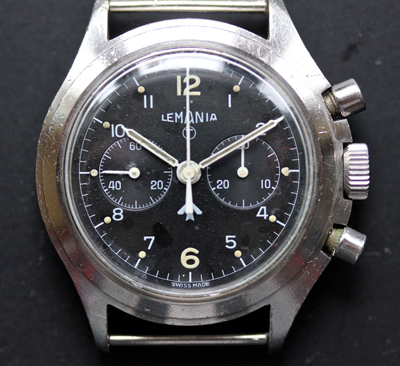
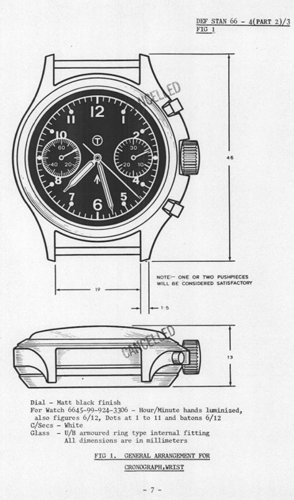
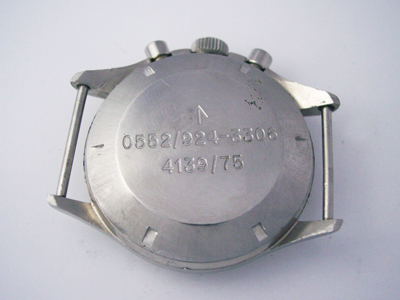
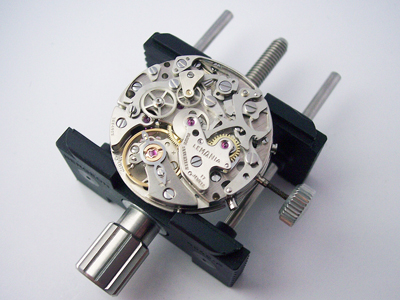
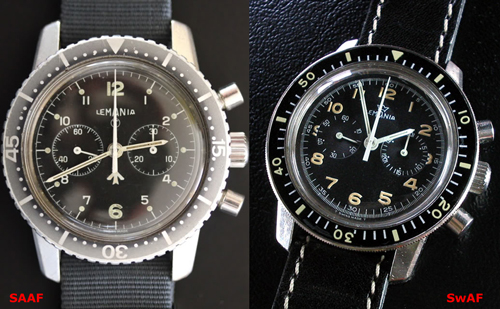
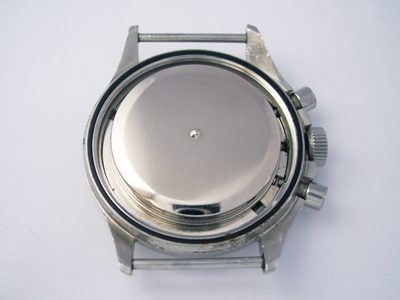
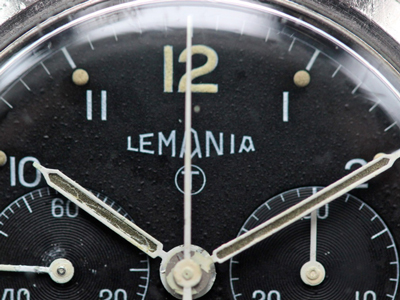
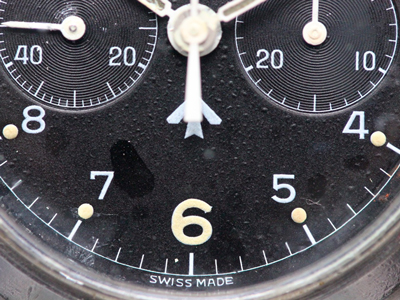
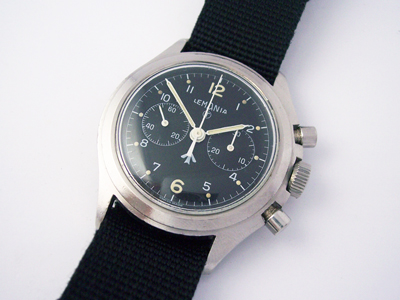
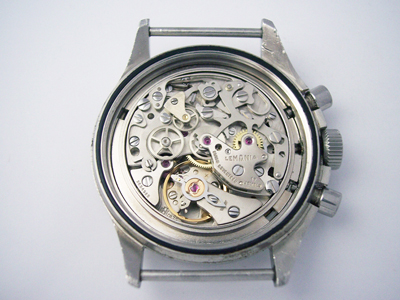
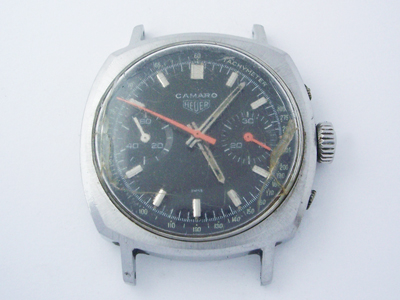
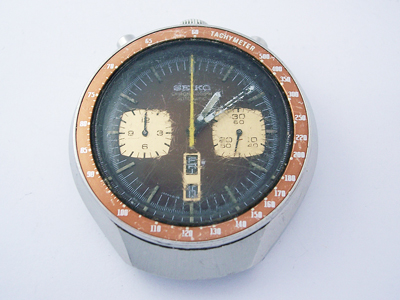
Rich,
An excellent job once again and an interesting post too. The dial looks terrific, I hope that Nick is delighted. Best regards Adrian
Lovey watch. The movement looks awesome! Great work on the dial there!
As always i enjoy you posts more then most watch blogs!